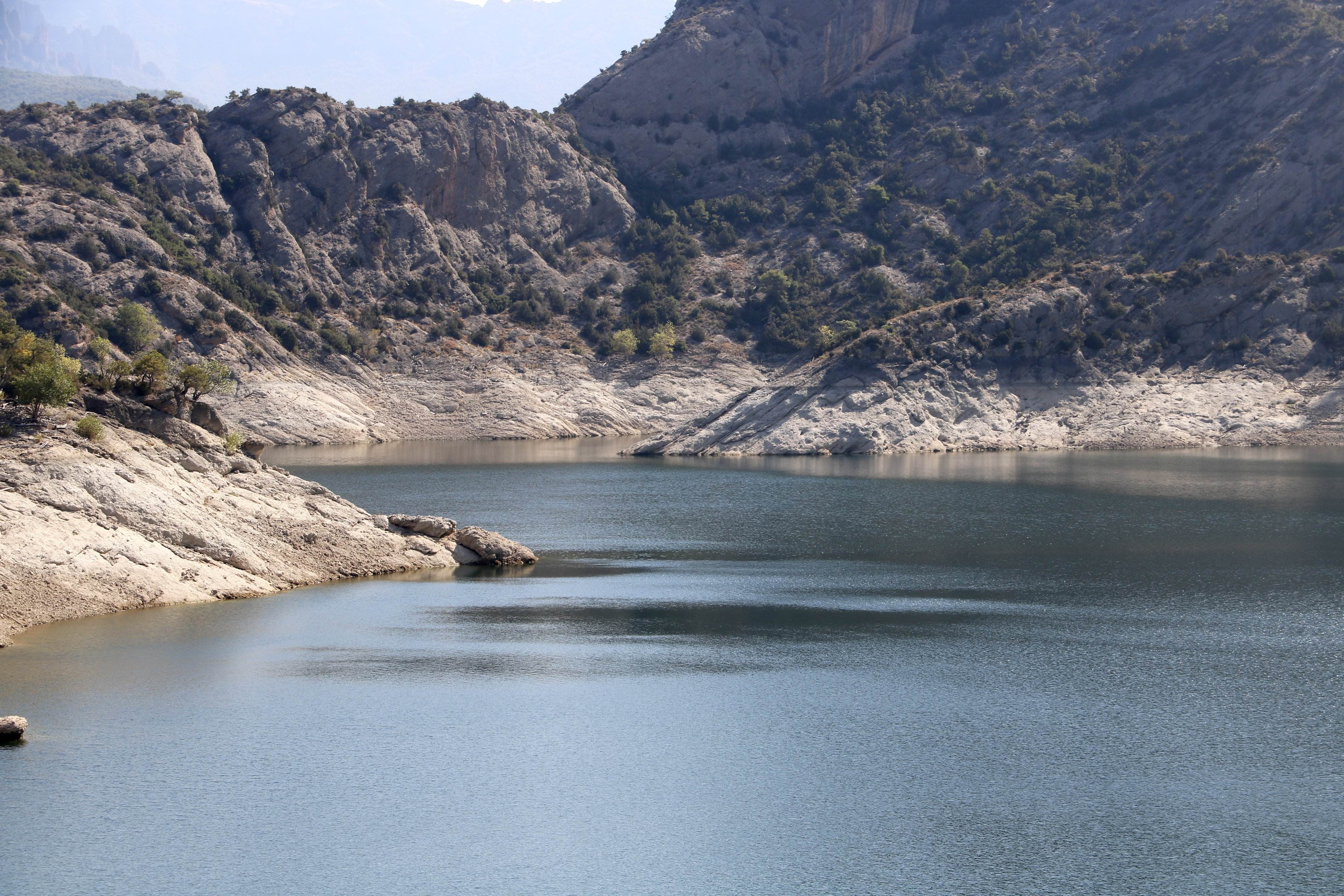The reservoirs continue to fill. The rainfall of the last few days has given the whole of Catalonia a watering, and the effect of this precipitiation is being felt in the reservoirs, which are currently recording their best water-level figures since January. And this includes the reservoirs of the Ter-Llobregat system, based on the two most important rivers in the north-east of Catalonia, whose waters supply six million people living in and around Barcelona and Girona. In fact, the water reserves exceeded 100 hm³ this Thursday, a threshold that marks the frontier for the emergency phase - the highest of five levels - of the drought. Specifically, the Sau, Susqueda, Baells, Llosa del Cavall and Sant Ponç reservoirs currently hold a total of 100.08 hm³ - which is 16.35% of their capacity - according to updated data from the Catalan Water Agency (ACA).
It was on February 1st - almost two months ago now - that the president of the Generalitat, Pere Aragonès, announced that the entire Ter-Llobregat system would enter an emergency phase, after having dropped below 100 hm³. Since then, reserves have continued to decline due to the continuing lack of rain, reaching a low of around 14.7%. In the second weekend of March, however, precipitation reversed the trend, and the reservoirs have been filling since then without stopping, after repeated episodes of rain. Now, they have exceeded 100 hm³ again, thus registering the best figure since the end of January.
Restrictions have not yet been lifted
However, the fact that the reservoirs have come out of the emergency phase, in terms of its strict measurement, does not mean that the restrictions linked to them have to be lifted. In fact, the government of the Generalitat has already cooled down any expectations of a rapid removal of all the prohibitions brought about by the drought emergency, at least in the short term. On Tuesday, the government spokeswoman, Patrícia Plaja, said that if the increase in water reserves in the reservoirs was to last only "days or weeks", the phase change would not occur to leave the emergency behind. "It makes no sense to leave today to re-enter in a fortnight," she said. Thus, she added that "many factors" had to be taken into account, including allowing the reservoirs to reach higher capacity figures and the long-range waether forecasts. The spokesperson's words also served as a correction to climate action minister David Mascort, who had spoken out in favour of lifting the restrictions, as the first extended spell of rainy weather was experienced.

